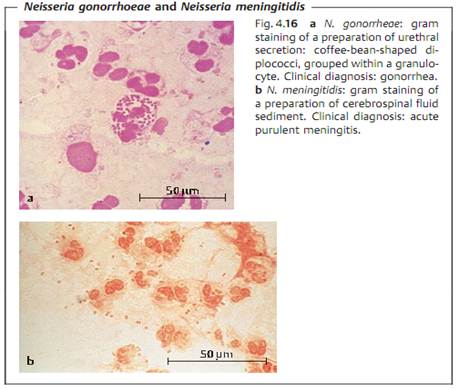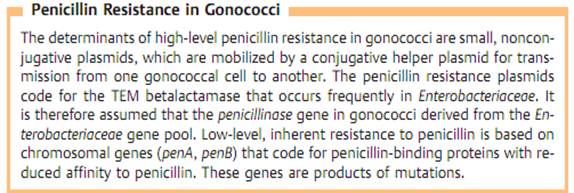

النبات

مواضيع عامة في علم النبات

الجذور - السيقان - الأوراق

النباتات الوعائية واللاوعائية

البذور (مغطاة البذور - عاريات البذور)

الطحالب

النباتات الطبية


الحيوان

مواضيع عامة في علم الحيوان

علم التشريح

التنوع الإحيائي

البايلوجيا الخلوية


الأحياء المجهرية

البكتيريا

الفطريات

الطفيليات

الفايروسات


علم الأمراض

الاورام

الامراض الوراثية

الامراض المناعية

الامراض المدارية

اضطرابات الدورة الدموية

مواضيع عامة في علم الامراض

الحشرات


التقانة الإحيائية

مواضيع عامة في التقانة الإحيائية


التقنية الحيوية المكروبية

التقنية الحيوية والميكروبات

الفعاليات الحيوية

وراثة الاحياء المجهرية

تصنيف الاحياء المجهرية

الاحياء المجهرية في الطبيعة

أيض الاجهاد

التقنية الحيوية والبيئة

التقنية الحيوية والطب

التقنية الحيوية والزراعة

التقنية الحيوية والصناعة

التقنية الحيوية والطاقة

البحار والطحالب الصغيرة

عزل البروتين

هندسة الجينات


التقنية الحياتية النانوية

مفاهيم التقنية الحيوية النانوية

التراكيب النانوية والمجاهر المستخدمة في رؤيتها

تصنيع وتخليق المواد النانوية

تطبيقات التقنية النانوية والحيوية النانوية

الرقائق والمتحسسات الحيوية

المصفوفات المجهرية وحاسوب الدنا

اللقاحات

البيئة والتلوث


علم الأجنة

اعضاء التكاثر وتشكل الاعراس

الاخصاب

التشطر

العصيبة وتشكل الجسيدات

تشكل اللواحق الجنينية

تكون المعيدة وظهور الطبقات الجنينية

مقدمة لعلم الاجنة


الأحياء الجزيئي

مواضيع عامة في الاحياء الجزيئي


علم وظائف الأعضاء


الغدد

مواضيع عامة في الغدد

الغدد الصم و هرموناتها

الجسم تحت السريري

الغدة النخامية

الغدة الكظرية

الغدة التناسلية

الغدة الدرقية والجار الدرقية

الغدة البنكرياسية

الغدة الصنوبرية

مواضيع عامة في علم وظائف الاعضاء

الخلية الحيوانية

الجهاز العصبي

أعضاء الحس

الجهاز العضلي

السوائل الجسمية

الجهاز الدوري والليمف

الجهاز التنفسي

الجهاز الهضمي

الجهاز البولي


المضادات الميكروبية

مواضيع عامة في المضادات الميكروبية

مضادات البكتيريا

مضادات الفطريات

مضادات الطفيليات

مضادات الفايروسات

علم الخلية

الوراثة

الأحياء العامة

المناعة

التحليلات المرضية

الكيمياء الحيوية

مواضيع متنوعة أخرى

الانزيمات
Neisseria
المؤلف:
Fritz H. Kayser
المصدر:
Medical Microbiology -2005
الجزء والصفحة:
6-3-2016
3865
Neisseria
Neisseria are Gram-negative, aerobic cocci that are often arranged in pairs. They are typical mucosal parasites that die rapidly outside the human organism. Culturing on enriched nutrient mediums is readily feasible.
Neisseria gonorrheae is the pathogen responsible for gonorrhea (“clap”). Infection results from sexual intercourse. The organisms adhere to cells of the urogenital tract by means of attachment pili and the protein Opa, penetrate into the organism using parasite-directed endocytosis and cause a pyogenic infection, mainly of the urogenital epithelium. An infection is diagnosed mainly by means of microscopy and culturing of purulent secretions. The therapeutic of choice is penicillin G. Alternatives for use against penicillinase-positive gonococci include third-generation cephalosporins and 4-quino- lones.
N. meningitidis is a parasite of the nasopharyngeal mucosa. These meningococcal cause meningitis and sepsis. Diagnosis involves detection of the
pathogens in cerebrospinal fluid and blood. The disease occurs sporadically or in the form of minor epidemics in children, youths, and young adults. The antibiotics of choice are penicillin G and third-generation cephalosporin.
The family Neisseriaceae includes aerobic, Gram-negative cocci and rods , the most important of which are the human pathogens N. gonorrheae and N. meningitidis. Other species in the genus Neisseria are elements of the normal mucosal flora.
Neisseria gonorrheae (Gonorrhea)
Morphology and culture. Gonococci are Gram-negative, coffee-bean-shaped cocci that are usually paired and have a diameter of approximately 1 µm (Fig. 4.16). Attachment pili on the bacterial cell surface are responsible for their adhesion to mucosal cells.
Gonococci can be grown on moist culture mediums enriched with protein (blood). The atmosphere for primary culturing must contain 5-10% CO2.
Pathogenesis and clinical picture. Gonorrhea is a sexually transmitted disease. The pathogens penetrate into the urogenital mucosa, causing a local purulent infection. In men, the prostate and epididymis can also become infected. In women, the gonococci can also cause salpingitis, oophoritis, or even peritonitis. Gonococci reaching the conjunctival membrane may cause a purulent conjunctivitis, seen mainly in newborn children. Gonococci can also infect the rectal or pharyngeal mucosa. Hematogenously disseminated gonococci may also cause arthritis or even endocarditis.

Diagnosis. The method of choice is detection of the pathogens by means of methylene blue and gram staining and culturing. Gonococci are sensitive in cultures and the material must be used immediately after they are obtained to inoculate Thayer-Martin blood agar with antibiotics added to eliminate accompanying flora, on which medium the cultures are then transported to the laboratory. The identification procedure involves both morphology and biochemical characteristics. Techniques developed recently utilize im-munofluorescence or coagglutination methods utilizing monoclonal antibodies to the main protein of the outer membrane, Por.
Direct detection in pus and secretion samples is possible using an enzymatic immunosorbence test or detection of gonococcus-specific DNA sequences coding for rRNA using a gene probe.
Therapy. The agent of choice used to be penicillin G. In recent years, however, the percentage of penicillinase-producing strains has increased considerably all over the world. For this reason, third-generation cephalosporins are now used to treat uncomplicated cases of gonorrhea. They are applied in a single dose (e.g., ceftriaxone, 250-500 mg µ.m.). Good results have also been reported with single-dose oral application of fluorinated 4-quinolones (e.g., 0.5 g ciprofloxacin or 0.4 g ofloxacin).

Epidemiology and prevention. Gonorrhea is a worldwide sexually transmitted disease that occurs only in humans. Its level of annual incidence in developed countries is estimated at 12 cases per 1000 inhabitants. The actual figures are likely to be much higher due to large numbers of unreported cases. A reduction in incidence seen in recent years may be due to AIDS prophylaxis. Protective immunization for high-risk persons is not feasible due to the antigen variability of the organism as described above. Stopping the spread of gonorrhea involves mainly rapid recognition of infections and treatment accordingly.
One hundred percent prevention of ophthalmia neonatorum is possible with a single parenteral dose of 125 mg ceftriaxone. Local prophylaxis is also practiced using a 1% solution of silver nitrate or eye ointments containing 1 % tetracycline or 0.5 % erythromycin.
Neisseria meningitidis (Meningitis, Sepsis)
Morphology and culture. Meningococci are Gram-negative, coffee-bean¬shaped cocci that are frequently pleomorphic and have a diameter of 1 µm (Fig. 4.16b). They are nonmotile and feature a polysaccharide capsule.
Growing meningococci in cultures requires mediums containing blood. A concentration of 5-10% CO2 encourages proliferation.
Antigen structure. Serogroups A, B, C, D, etc. (a total of 12) are differentiated based on the capsule chemistry. Epidemics are caused mainly by strains of
serogroup A, sometimes by B strains as well and, more rarely, by group C strains. Serogroups are divided into serovars based on differences in the outer membrane protein antigens.
Pathogenesis and clinical picture. Meningococci are parasites of the naso-pharynx. These microorganisms are carried by 5-10% of the population. If virulent meningococci colonize the nasopharyngeal mucosa of a host lacking the antibodies, pathogen invasion of the mucosa by means of “parasite- directed endocytosis” becomes possible (see p. 12). The CNS is doubtless the preferred compartment for secondary infections, although hematogenously disseminated pathogens can also infect the lungs, the endocardium, or major joints.
Onset of the meningitis is usually sudden, after an incubation period of two to three days, with severe headache, fever, neck stiffness, and severe malaise. Severe hemorrhagic sepsis sometimes develops (Waterhouse-Frie-drichsen syndrome).
Diagnosis requires detection of the pathogen in cerebrospinal fluid or blood by means of microscopy and culturing techniques. For success in culturing, the material must be used to inoculate blood agar without delay. Identification of the pathogen is based on identification of metabolic properties. The slide agglutination test is used to determine the serogroup.
Latex agglutination or coagglutination can be used for direct anti¬gen detection in cerebrospinal fluid.
Therapy. The antibiotic of choice is penicillin G. Very good results have also been obtained with third-generation cephalosporin, e.g., cefotaxime or ceftriaxone. It is important to start treatment as quickly as possible to prevent delayed damage.
The advantage of cephalosporins is that they are also effective against other meningitis pathogens due to their broad spectrum of action (with the exception of Listeria monocytogenes).
Epidemiology and prevention. Meningococcal infections are more frequent in the winter and spring months. Transmission of meningococci is by droplet infection. Humans are the only pathogen reservoir. Sources of infection include both carriers and infected persons with manifest disease. In developed countries, meningitis occurs sporadically or in the form of minor epidemics in more or less isolated collectives (work camps, recruiting camps, school camping facilities). The incidence level is approximately 12 cases per 100 000 inhabitants per year. In parts of the developing world (African meningitis belt) the level is higher. Lethality runs to 85% if the disease is left untreated, but is reduced to less than 1% if treatment is begun early enough. Prophylactic antibiosis is indicated for those in close contact with diseased persons (e.g., in the same family). Prophylactic measures also include treatment of
carriers to eliminate this reservoir, whereby minocylin or rifampicin must be used instead of penicillin G. Prophylactic immunization can be achieved with a vaccine made from the purified capsule polysaccharides A, C, Y, and W-135. There is no serogroup B vaccine, since the capsule in serogroup B consists of polyneuraminic acid, which the immune system does not recognized as a foreign substance.
 الاكثر قراءة في البكتيريا
الاكثر قراءة في البكتيريا
 اخر الاخبار
اخر الاخبار
اخبار العتبة العباسية المقدسة

الآخبار الصحية















 قسم الشؤون الفكرية يصدر كتاباً يوثق تاريخ السدانة في العتبة العباسية المقدسة
قسم الشؤون الفكرية يصدر كتاباً يوثق تاريخ السدانة في العتبة العباسية المقدسة "المهمة".. إصدار قصصي يوثّق القصص الفائزة في مسابقة فتوى الدفاع المقدسة للقصة القصيرة
"المهمة".. إصدار قصصي يوثّق القصص الفائزة في مسابقة فتوى الدفاع المقدسة للقصة القصيرة (نوافذ).. إصدار أدبي يوثق القصص الفائزة في مسابقة الإمام العسكري (عليه السلام)
(نوافذ).. إصدار أدبي يوثق القصص الفائزة في مسابقة الإمام العسكري (عليه السلام)


















